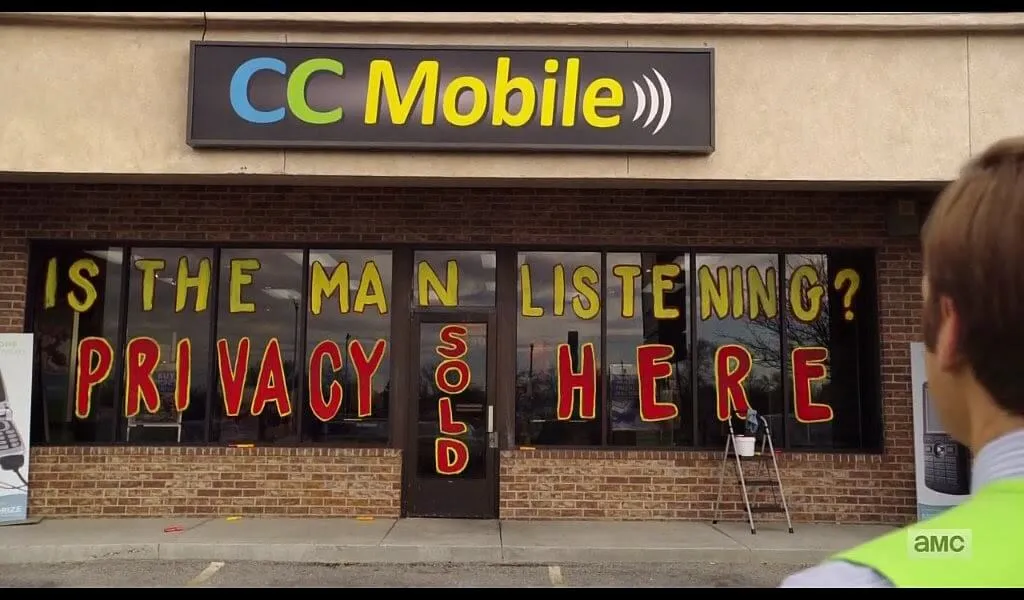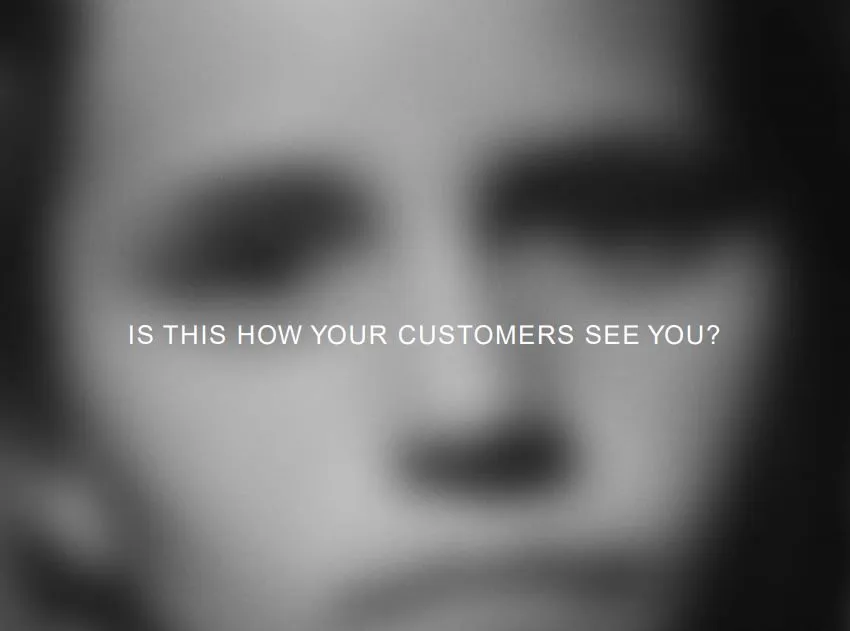In an age where the patient choice is expanding rapidly, where people are time-poor and information-rich; Where everyone is fist-fighting for your patient’s short attention, not differentiating your medical business is the same as being invisible.
For the first time in history, competition does not come from your direct competitors, indeed, but from the market clutter.

According to research done by the Red Crown Marketing agency, It is estimated that the average person encounters between 6,000 to 10,000 ads daily. All from the same sounding brands, providing the same sounding offers with the same sounding voice.
This rushing flood of me-too brands forces our brains to deal with this clutter the best way it knows how—by blocking most of it out. And what’s left is the interesting, the inspiring, and the different.
Differentiation works because our cognitive system works. Our brains, to protect us from this vast amount of irrelevant information, learn to distinguish between the “lookalike” and the unique.
This way we only pay attention to what’s valuable and we don’t have to waste our time hearing the same marketing messages over and over.
And in this lesson, we’re going to find strategic ways for you to cut through the “me too” brands and highlight what’s unique about yours.
After this workshop, your brand won’t compete, but rather render the competition irrelevant.
This lesson covers:
- What is positioning? And how it can help you attract more patients
- To Focus or to defocus, why you should “focus” your brand
- Brand Differentiation Workshop
- Audience Persona Exercise
- Brand Differentiator Graph Exercise™
- Onliness Statement Exercise
- What’s next
“Is The Man Listening? Privacy Sold Here”
In one of the episodes of the show Better Call Saul, the protagonist, James Mcgill, had to work in a mobile store where there are no customers whatsoever.
The branch James worked in sells the same phones as every competitor. There was nothing that merits his store.
Fed up with this, one day, James painted on the store’s frontend the following statement:
“Is The Man Listening? Privacy Sold Here”

While you can buy the same phone somewhere else, James sells you privacy.
He differentiated the store to be the only store that sells privacy to its customer. It’s his positioning statement. A statement that declares the store’s differentiator.
He knows that his surrounding area is full of drug dealers and smugglers. So The statement “Privacy sold here” resonates with people that want to keep a low profile.
Although this is a fictional story, the concept it presents holds to real-life marketing.
And this is exactly what a positioning strategy is for. Positioning aims to develop a key element that differentiates your medical brand. Your positioning is where your medical business stands in relation to other brands. It’s your unique position in the market.
But before we dive into the “how”, I want to drive home a concept many might find counterintuitive. And that is “focusing” on your brand.
To focus or to defocus: is your practice focused enough?
An unfocused brand is one that’s so broad that it doesn’t stand for anything. A focused brand, by contrast, knows exactly what it is, why it’s different, and why people want it
― Marty Neumeier

In his book, The Win Without Pitching Manifesto, author Blair Enns calls positioning “The Difficult Business Decision”.
And it makes sense.
Many when asked to focus their brand to serve specific kinds of people with specific kinds of offers, think it limits their outreach.
An example of focusing is being a practice that focuses on athletic injuries. It might sound restricting at first, After all, If we narrow our offering, won’t we narrow our profit opportunities?
Answer: Not necessarily.
History has shown that it pays handsomely to be number one in your category—first, because of higher margins, and second because the risk of commoditization is almost nonexistent.
The exact opposite of this is what we call brand dilution: when you try to be everything to everybody and windup like every other business. By being broad, you defocus your brand and leave it up to would-be patients to decide where to go.
If there are multiple care facilities, offering the same services, for the same patients, why should they choose you? Better equipment? Can be bought. Better quality care? Everybody claims so. Affordable? Well, you run the risk of participating in a race to the bottom.
Focusing your brand could be also about how you deliver your care and not the people you serve. Maybe you’re the most convenient care provider? Or your medical business is focused on same-day care and being the fastest service in your domain for busy people.
Focusing the brand to serve specific people with specific needs is what sets you apart and gives it clarity. It is a declaration of authority and expertise.
Now, with that out of the way, let’s dive into the strategy of how to go about differentiating your brand.
Brand Differentiation Workshop
Note: You can access the workshop by clicking here
The goal of the Brand Differentiation Workshop is to single your brand out of the sea of sameness. We’re going to implement 3 exercises that will focus on finding AND highlighting your brand’s unique differentiator. A differentiator that sets you apart and can’t be easily mimicked.
This workshop strategy consists of 3 exercises:
- Audience Persona
- Differentiator Development
- Onliness Statement Development
1) Audience Persona Exercise ⏰ [15-25 minute]
Knowing your target audience lets you connect and align yourself with their needs. And for this, we’ll use audience persona exercise; Where we stress your ideal patients and their core characteristics.
The goal here is to get an overview of what makes your target audience tick. You’ll explore what they like, fear, and desire. Knowing this we’ll be key to finding a differentiator that matches their values.
But first, you need to decide on what type of patient you want to serve. If you’re a chiropractic, you might want to focus on athletes and gymnasts. Or maybe you’re a dental practitioner that likes working with children and finds them much easier to deal with? Or perhaps your target patients are mothers-to-be and your hospital helps them deliver babies.
If you don’t have a specific type of patient, just think of the people you want to help. They may vary from middle age moms or busy people with kids or influencers and image-aware people.
Once you find who you like and want to serve, move on to the next step.
#~ Plotting your audience characteristics:

The audience persona diagram consists of 4 quadrants:
- Goals:
- This quadrant will hold info about your patient’s goals and main aspires.
- Problems:
- This is where you plot your patient’s issues, problems, and what hinders them from achieving their goals. (NOTE: theses issues should relate to how you can solve them, more on that in a second)
- Impact
- Here is where you plot the consequences of the problems your patient has.
- Desires:
- What do they desire? What’s the perfect scenario they want when they visit you?
You and your team start answering the following questions with respect to their quadrant:
- For goals: What objectives they have as it relates to your offering?
- For problems: What are the problems your patient faces before they know you?
- For Impact: What do they fear because of those problems?
- For Desires: What’d be the desirable experience? What would be the best-case scenario after they get your treatment?
Use sticky notes and pin them to their respective quadrant.
Once you’ve done that, use a different color sticky note on the middle circle to describe your target audience in 1 or 2 short sentences.
The result should look like this:

Once you’re done, discuss the finding with your team and move on to the next step.
2) Brand Differentiator Graph Exercise ⏰ [15-25 minute]
After getting a firm understanding of your audience, it’s time to develop a differentiator that matches their values. And for that, we’ll use Brand Differentiator Graph Exercise™ (BDG).
The BDG helps you achieve the following:
- Plot potential unique value offers or differentiator, And;
- Evaluate your possible differentiators based on how important they are to your patients and;
- To check whether or not the competition is using the same differentiators.

Furthermore, the graph is split into four sections:
- Unappreciated efforts:
- This section holds everything that most of your competitors have and is of little importance to your patient. Having an about us website is of no huge value to your patient. And every competitor mostly has one. So it’s an unappreciated effort if you have one.
- Fulfilled priorities:
- This section holds critical parts of your medical business such as a good office space/parking lot. These are important for your patients but it doesn’t set you apart per se.
- Secondary differentiators:
- Here are aspects of your business that are different and most competitors don’t have; however, at the same time, they don’t add that much value for your patients. For example, an online booking system.
- Primary differentiators:
- These are differentiators that are key to your success. Because they add high value to your patients and your competitors do not have this unique aspect. For example, if you’re an expert at athletic injuries and most of your competitors don’t have the same experience you have.
On the x-axis is how important the differentiator is to your patients. On the y-axis is how prevalent this differentiator is in the competitive landscape (how much it is used).
Brainstorm possible differentiators and write down on sticky notes possible unique aspects about your practice or a different approach to your service.
If you couldn’t come up with something, try to think of how you can outmaneuver everyone and take another approach to your practice.
Here are few questions to give you a head start:
- What do we do differently and exceptionally well?
- What are the unmet needs that patients are experiencing in our field?
- What do our competitors do mediocrely? Can we raise the bar?
- What are some of the industry “standards” that we can diverge from?
- What sort of luxury patients are not aware of, that could elevate their experience?
Write all of the possible ideas and start plotting them on the BDG.
The graph will look something like this

After you have filled out all of the quadrants of the BDG, it’s time to hone in on ONE differentiator and highlight that as your ONLY thing your brand can do and others can’t.
3) Onliness (onlyness) Statement Exercise ⏰ [15-25 minute]
Onliness Statement is a positioning statement that radically differentiates your practice and provides it with crystal clarity. It’s simple yet the hardest part of the positioning strategy.
The onliness statement declares the only thing that your medical brand does uniquely and no other competitor can claim.

The template of the statement is as follows:
Our [Offering/Brand] Is the only [Category] That [Differentiator].
Here are examples from our clients to take inspiration from:





#~ Plotting your onliness statement:
- First:
- take inspiration from the Brand Differentiator Graph™ to finish your onliness statement. It is better to take primary differentiators from the graph because they are already unique to your business and competitors can’t copy them.
- Second:
- On the right side of the Onliness Statement Exercise template, there are four quadrants where you can stick candidates’ statements. Participants should use sticky notes and try to come up with as many candidates as possible.
- Third:
- After you and your team gather a few ideas, use the red dots on the right side to vote on which one is the most suitable for your brand. As per usual, the founder has 2 points for his/her vote and the rest of the team 1 point.
After you’re done voting, the highest-ranked statement is your winner.
End the workshop ⏰ [5-10 minute]
The same as the previous workshop, offer a quick recap and congratulate your team on their efforts. After that, you want to keep tabs on these insights by storing them in PDFs or spreadsheets for future use.
And keep in mind that…
That what we’re doing up until now is all internal. No one outside your team should see it. Well, you might ask “what’s the point then?”. The point here is that we don’t want to just publicly share this information and slap it in people’s faces.
As of yet, the findings of these workshops are highly valuable. BUT, they are useless if they aren’t communicated. And how to powerfully communicating them is the subject of lesson 4. So expect some exciting stuff to come up.
What’s coming up next?
The next lesson is the most creative workshop by far. We’ll focus on adding a little bit of pizzazz and sprinkling a bit of flair to your medical brand’s communication. We’ll also see how we can inject humanistic attributes into your brand and make it as charismatic as it can be.
If you need any help with today’s exercise or any comments just reply to the email of this lesson or email me at sliman@unnus.com I’ll be happy to help.
Until tomorrow.

